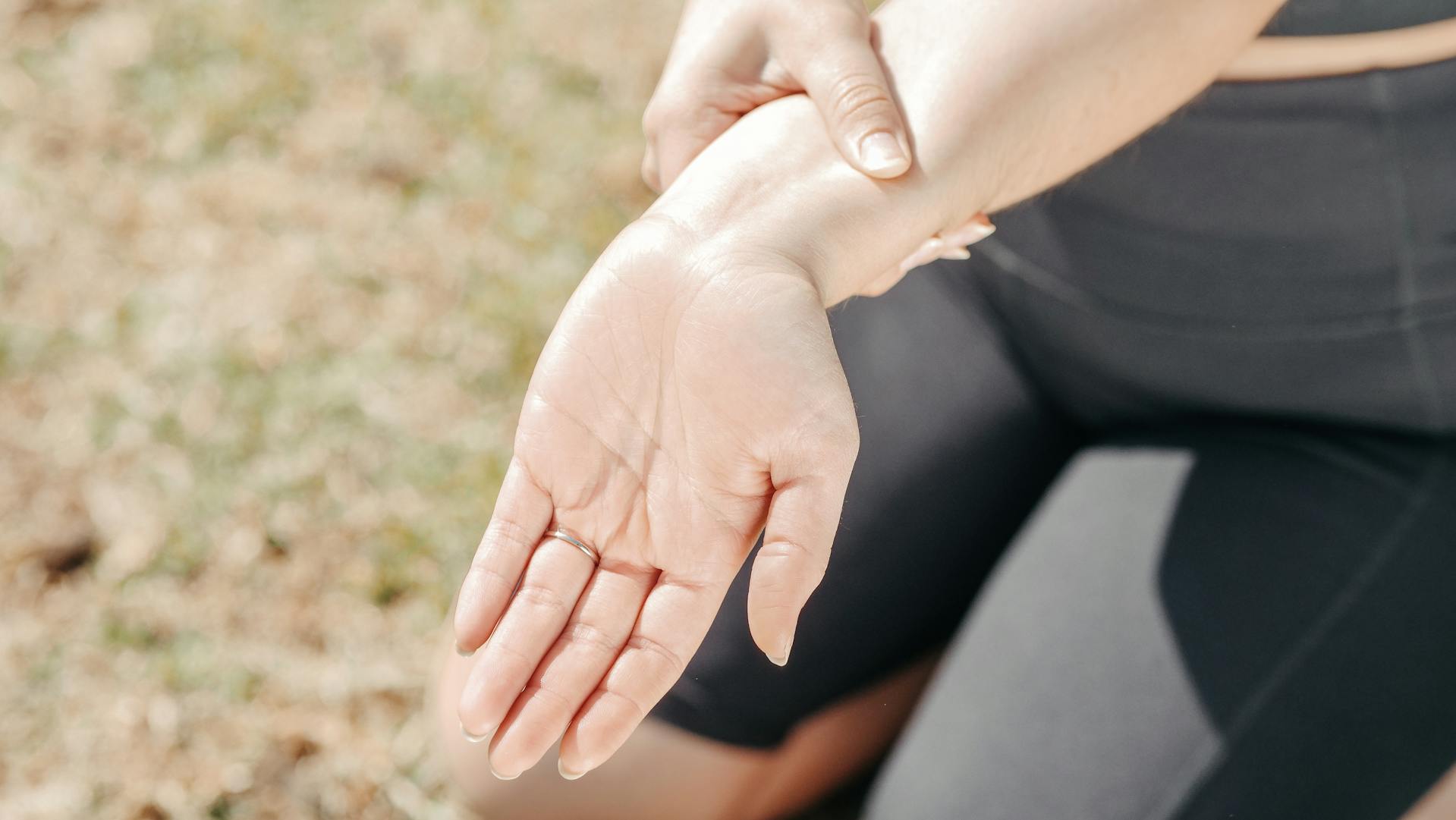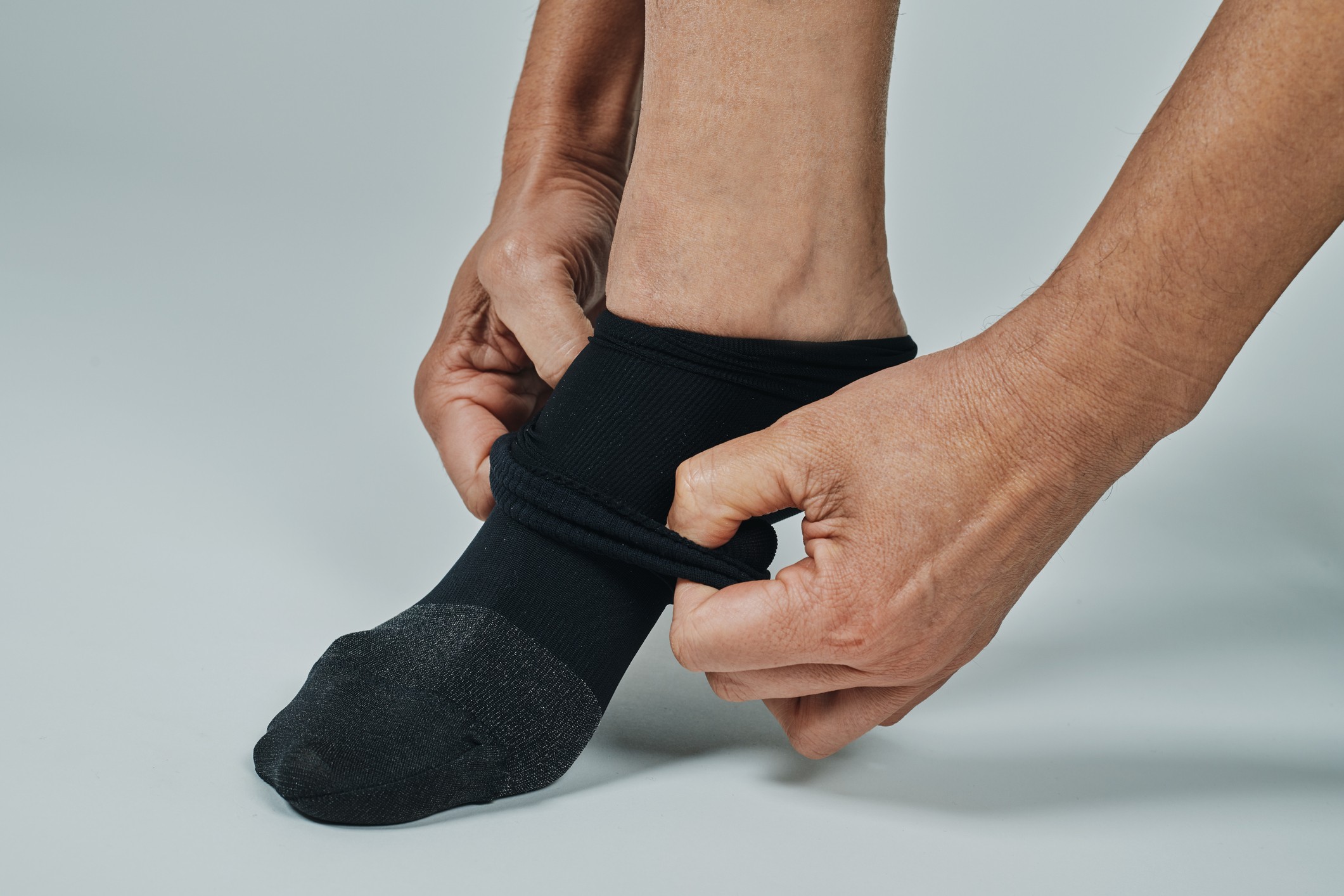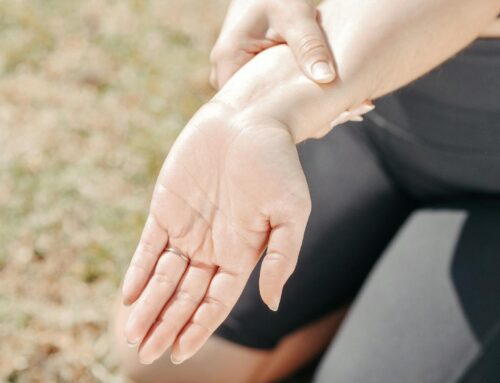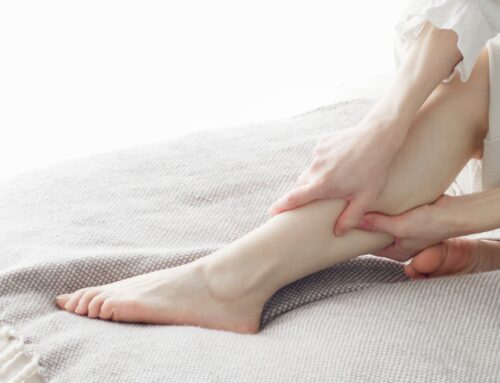When you’re dealing with tired legs, swelling, or circulatory concerns, compression socks can be a big help. But if you’ve found yourself staring at a rack of compression socks at your local pharmacy and wondering if they’re good enough, you’re not alone. Medically fitted compression socks offer a much different level of support compared to the store-bought ones you grab off the shelf.
What Makes a Compression Sock Medical Grade?
Not all compression socks are created equal. Over-the-counter options may offer basic support, medical-grade compression socks are designed to meet clinical standards and address specific health needs.
What sets them apart isn’t just the tightness, it’s the precision. These socks deliver graduated compression, meaning the pressure is highest at the ankle and gradually decreases as it moves up the leg. This gradual pressure helps encourage healthy blood flow back toward the heart, which can reduce swelling, lower the risk of blood clots, and ease discomfort from conditions like varicose veins, lymphedema, deep vein thrombosis (DVT), and chronic venous insufficiency.
Compression Ratings
Medical-grade socks follow clearly defined pressure standards, measured in millimetres of mercury (mmHg). These ratings aren’t arbitrary, they’re backed by clinical research and often recommended or prescribed by healthcare providers.
Here’s a quick look at common compression levels:
- 15–20 mmHg: Mild support for tired legs, travel, or mild swelling
- 20–30 mmHg: Moderate compression, often recommended for varicose veins, post-surgery recovery, or standing occupations
- 30–40 mmHg and above: Firm to extra firm, used under medical supervision for chronic venous disorders or lymphedema
Unlike store-bought socks, which may not disclose pressure levels at all, medical-grade options are consistent and accurate, making it easier for both you and your healthcare provider to choose the right level.
Fitted to Your Unique Measurements
Medical-grade compression socks use precise measurements from your ankle, calf, and sometimes thigh and leg length, rather than relying on generic small, medium, or large sizing. This approach ensures the compression targets the right areas without fitting too loosely or squeezing too tightly.
A proper fitting takes only a few minutes but can dramatically improve how the socks feel and perform throughout your day.
Built for Durability and Long-Term Comfort
Manufacturers design medical compression socks with daily, long-term wear in mind. They use higher-quality materials like moisture-wicking yarns, flat seams, and soft, non-irritating cuffs that stay comfortable without digging into your skin. These socks also offer better breathability and hold their shape longer than lower-cost versions that quickly lose elasticity.
Some models also include antimicrobial fabrics, open-toe designs, or extra-wide calf sizes to improve comfort and flexibility even further.
What Store-Bought Compression Socks Offer
If you’ve ever browsed the pharmacy aisle or shopped online for compression socks, chances are you’ve come across a wide variety of store-bought options. These over-the-counter socks are popular for good reason, they’re easy to access, affordable, and marketed as a quick solution for tired legs, swelling, or travel.
For light use, store-bought compression socks can offer real comfort. Many people wear them on long flights, during extended shifts on their feet, or to help with general leg fatigue. But it’s important to understand what these socks do, and don’t, provide.
Light, Uniform Pressure
Most off-the-shelf socks offer mild compression, typically below 15–20 mmHg, and many don’t use mmHg ratings at all. Instead, they’re often labelled with vague terms like “mild support” or “energizing fit.” Unlike medical-grade socks, which use graduated compression to assist blood flow, store-bought versions often apply uniform pressure throughout the sock, which isn’t as effective for circulation support.
One-Size-Fits-Most Approach
Rather than being tailored to your leg dimensions, store-bought socks usually follow general sizing categories like small, medium, or large, often based on shoe size. This approach works for some people, but not everyone. If you have a wider calf, a longer leg, or a history of swelling, these socks may feel too tight in some areas and too loose in others, which can reduce their effectiveness.
Inconsistent Quality and Performance
One of the biggest challenges with retail compression socks is variation in quality. Some are well-made with soft, breathable fabrics and reinforced heels. Others can be thin, overly elastic, or start to lose their shape after a few washes. And because there’s no regulated standard for compression levels in most retail brands, it’s hard to know exactly what you’re getting.
You may also find inconsistencies within the same brand, where one pair feels snug and helpful, and the next is loose or irritating. Unlike medical-grade socks, there’s no guarantee that the labelled compression level (if included) is accurate or consistent across pairs.
Good for Short-Term Relief, Not Long-Term Support
If you’re using compression socks for occasional activities, like flying, light workouts, or long hours on your feet, a store-bought pair may do the trick. They can help reduce mild swelling and prevent that heavy-leg feeling at the end of the day.
But for people with circulatory conditions, persistent swelling, or those recovering from surgery, over-the-counter socks typically fall short. Without the right level of compression and a proper fit, they may not provide the support your body needs and in some cases, may even make symptoms worse if they bunch, slide, or constrict incorrectly.
Hidden Differences Most People Don’t Notice
The little details in compression socks can make a big difference in how they feel, how they last, and how well they actually work. When you look beyond the basic features, some less obvious differences begin to stand out.
Stitching and Fabric Quality
At first glance, a sock is just a sock. But when you’re wearing compression socks for hours at a time (or every day) construction quality really matters.
Medical-grade compression socks are often made with flat or seamless stitching, which minimizes rubbing, pressure points, and skin breakdown. The yarns used tend to be high-density and moisture-wicking, helping to regulate temperature and reduce the risk of bacterial growth.
Store-bought options may use bulkier seams, tighter cuffs, or cheaper synthetic blends. These can cause chafing, heat buildup, or itchy skin, especially behind the knees or at the ankle where socks often bunch or roll.
If you’ve ever peeled off a pair of socks and found deep red marks, itching, or uncomfortable creasing, that’s usually a sign of poor fit or subpar materials.
Accuracy and Consistency of Compression Levels
Many people overlook the importance of compression accuracy. Manufacturers of medical-grade socks follow strict standards to ensure that the listed mmHg pressure rating is both accurate and evenly distributed throughout the sock.
In contrast, store-bought socks often skip these quality controls. Even if they display a compression range like 15–20 mmHg, they rarely guarantee consistent pressure. Two pairs with the same label can feel completely different or fail to deliver support where your legs need it most.
For anyone managing swelling, vein concerns, or circulation issues, this inconsistency often determines whether the socks bring real relief or ongoing frustration.
Range of Options for Fit, Function, and Style
One of the biggest advantages of going with medical-grade compression is customization. These socks are designed with real-life needs in mind, including foot sensitivity, mobility concerns, and personal style.
Below are just a few of the options that are often only available with professionally fitted or prescription socks:
- Open-toe styles for individuals with toe sensitivity or those who prefer more ventilation
- Extra-wide calf sizes to accommodate swelling or muscular legs without cutting off circulation
- Knee-high, thigh-high, or full pantyhose options depending on where support is needed
- Soft-top cuffs that stay up without binding or digging into the skin
These choices aren’t just about comfort, they can impact compliance. If socks are difficult to put on or uncomfortable to wear, people are far less likely to use them consistently, which reduces their effectiveness over time.
When It’s Worth Getting Professionally Fitted
Not everyone needs a prescription or clinical-grade solution, there are clear situations where a professional fitting makes a real difference. Compression socks work best when they match your body, not just your shoe size. A good fit means better comfort, better circulation, and better outcomes.
Here are some signs it’s worth taking the extra step:
- Chronic leg swelling or heaviness
If your legs feel tired, achy, or swollen by the end of the day, especially around the ankles, it could be a sign of poor circulation or fluid buildup. A properly fitted sock can help manage symptoms before they become more serious. - You’ve been diagnosed with a condition
Medical-grade compression is often recommended for people with varicose veins, diabetes, lymphedema, post-thrombotic syndrome, or chronic venous insufficiency. The right level of compression can support blood flow, reduce discomfort, and help prevent complications. - You’ve had a DVT or recent surgery
After surgery, especially orthopedic or vascular procedures, compression can help reduce the risk of clotting and encourage recovery. But the wrong level of compression or an ill-fitting sock can actually do more harm than good. A professional fitting ensures that you’re using the correct pressure and style. - Store-bought socks are uncomfortable or leave marks
If you’ve already tried off-the-shelf socks and noticed pinching, deep red indentations, or bunching at the ankle or knee, chances are the sizing or design isn’t right for you. That’s a strong signal that a more tailored solution is needed. - Your lifestyle puts added strain on your legs
People who spend long hours standing or sitting, like nurses, retail workers, drivers, or frequent flyers, may benefit from a more precise fit, even without a formal diagnosis. Prevention is often easier and more affordable than treating pain or swelling later on.
What to Expect During a Fitting
A fitting usually takes about 15 to 20 minutes and involves measuring your ankle, calf, and sometimes your thigh or leg length. These measurements help determine both the compression level and the sock size and style that will offer the best support for your needs.
You’ll also have the chance to discuss:
- Whether you need knee-high, thigh-high, or full-length options
- Open-toe vs. closed-toe styles
- Any skin sensitivities or previous problems with socks
- How to properly put them on and take them off
- How many pairs you may need based on your daily routine
Many people feel surprised when they find out their legs don’t match standard sizing. Even small differences in fit can significantly affect comfort and results.
A fitting doesn’t require you to buy anything on the spot. It simply gives you expert guidance, so you can make an informed decision and avoid spending money on socks that don’t work as expected.
If you’re curious about whether medical-grade compression is right for you, booking a fitting at Care-Med is a great place to start. We take the time to get your measurements right and answer any questions you have, no pressure, just support that fits your life.
Insurance and Cost
One bonus that often gets missed, medical-grade compression socks are sometimes covered by insurance, especially if prescribed. They may seem more expensive upfront, but the improved performance, durability, and potential coverage can actually make them more cost-effective over time.
Choosing What’s Right for Your Legs
If you’re just dipping your toes into compression socks for travel or standing all day at work, store-bought options are a decent start. But if comfort, medical need, or long-term wear are on your mind, getting professionally fitted is absolutely worth considering.
Your legs do a lot for you. Giving them the right kind of support shouldn’t be left to guesswork.
Need help finding the right pair? At Care-Med, we specialize in medically fitted compression socks and can walk you through the process with no pressure. Book a fitting or give us a call with your questions.
Share This Story, Choose Your Platform!
Table of Contents
We specialize in orthotics, body braces, and compression wear tailored to your unique needs in Toronto. Reach out to us at info@caremed.care or call 416-782-5353 to book your fitting and consultation.
Experience the difference of customized solutions designed just for you.











